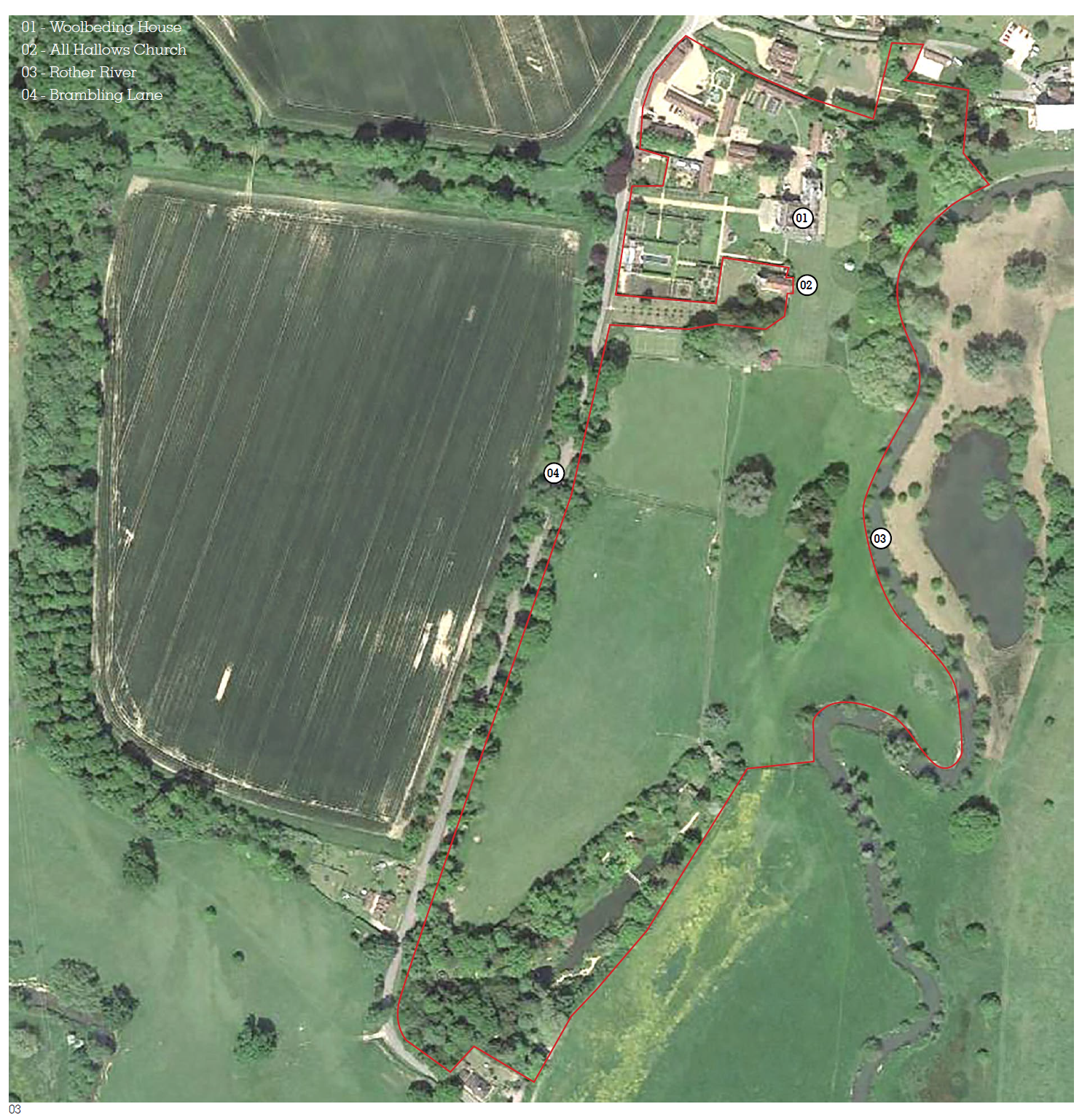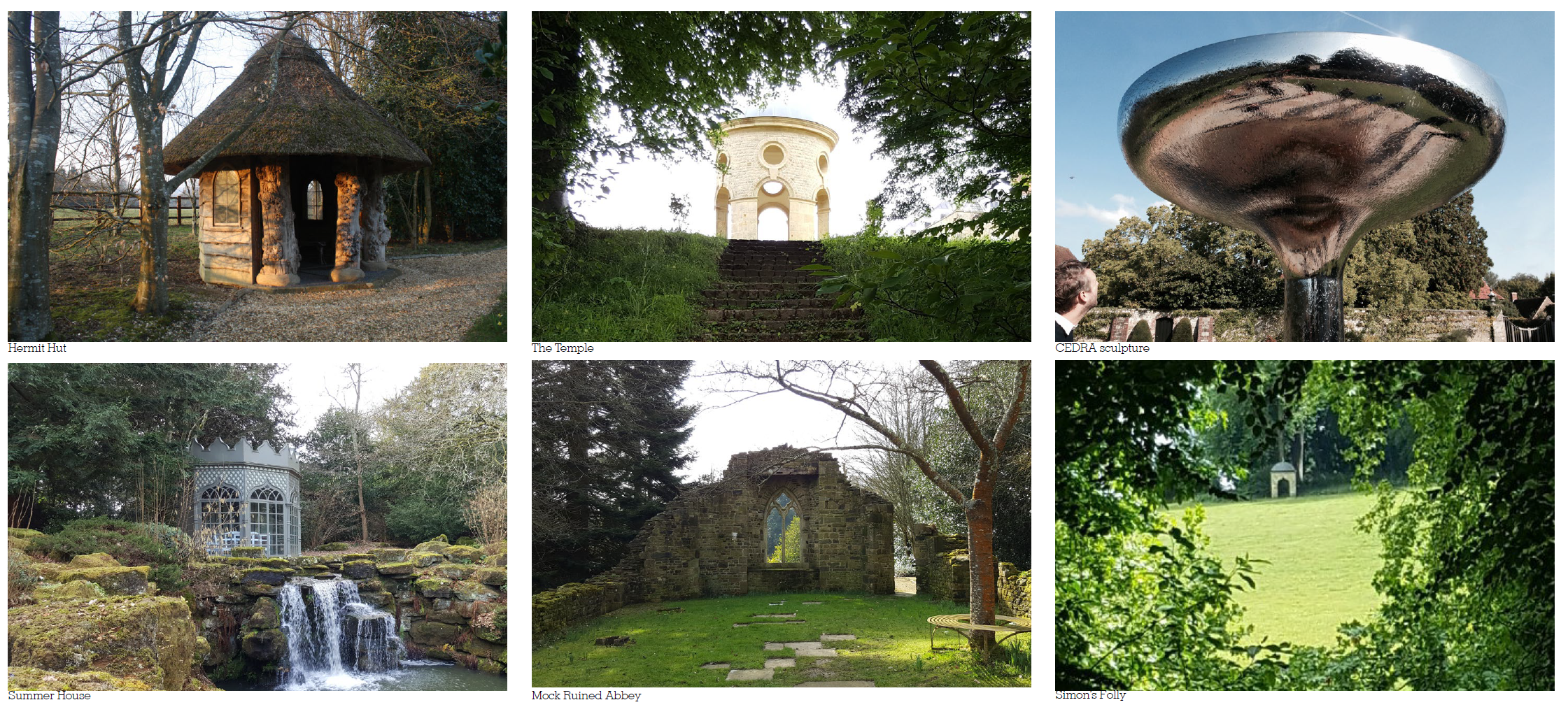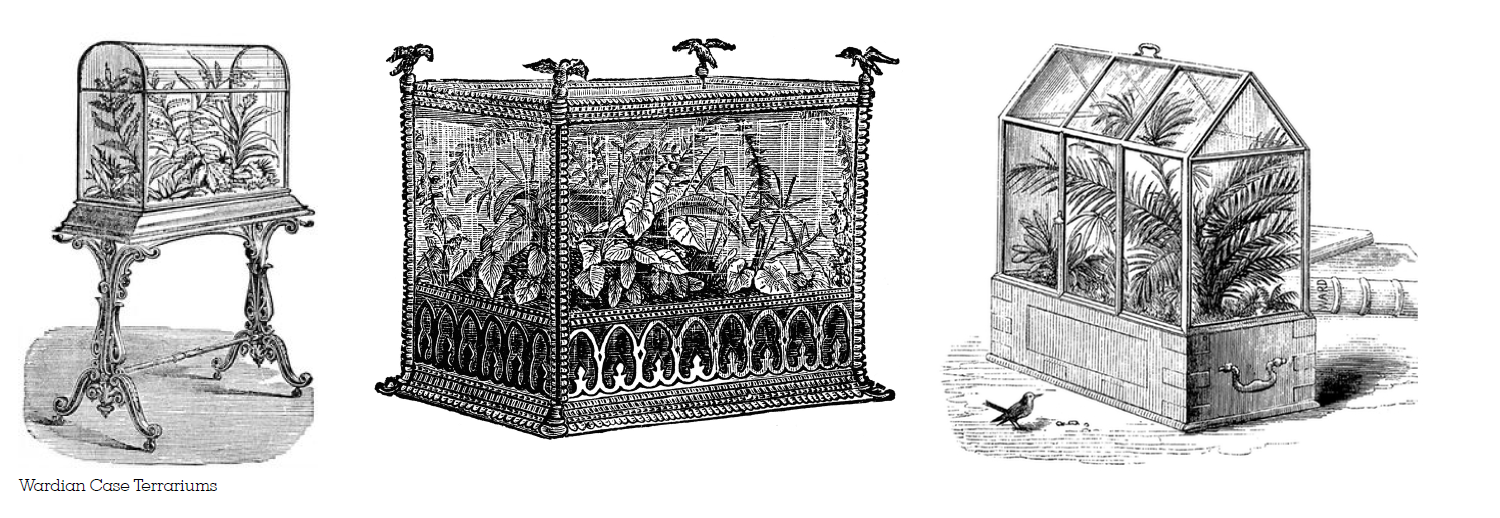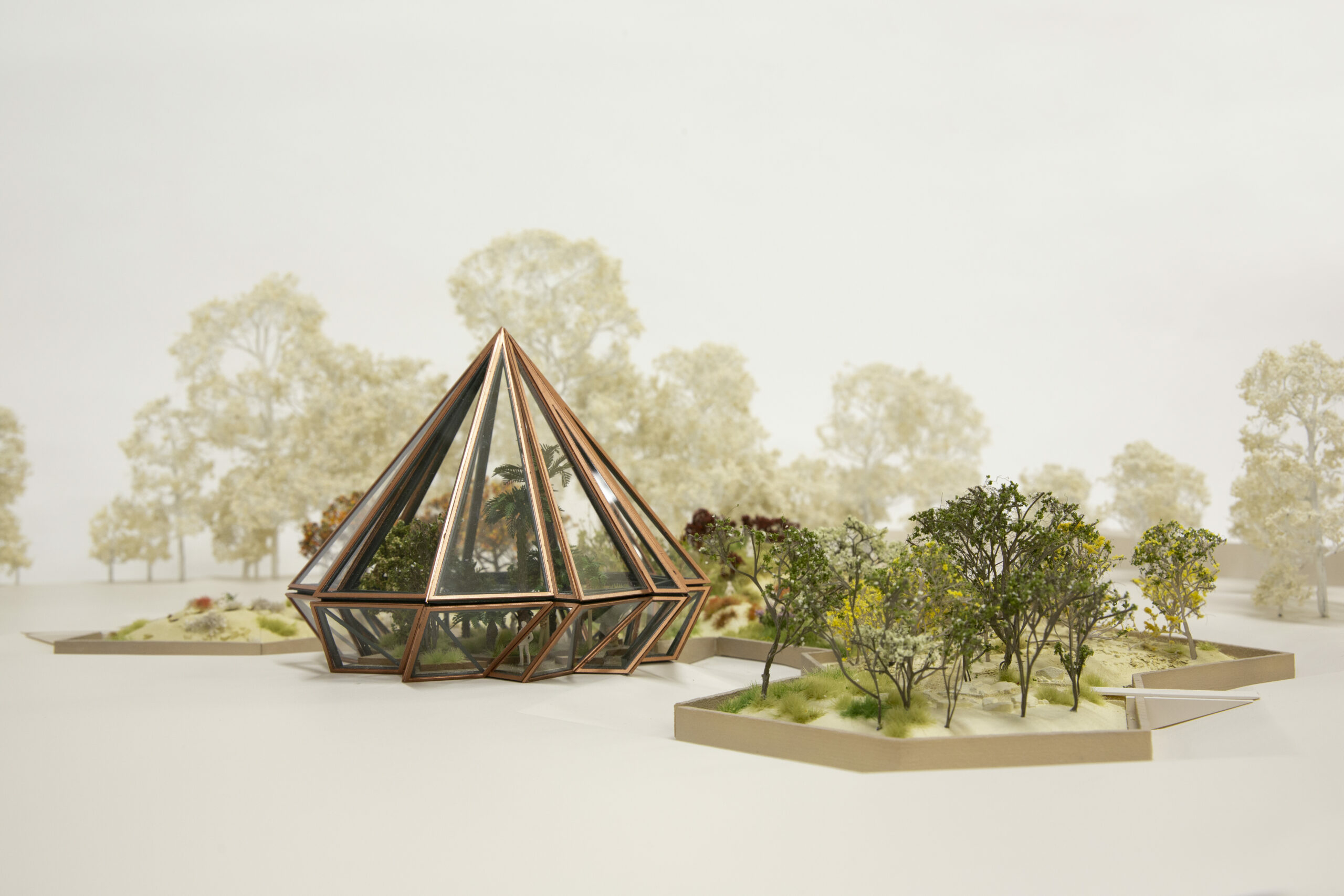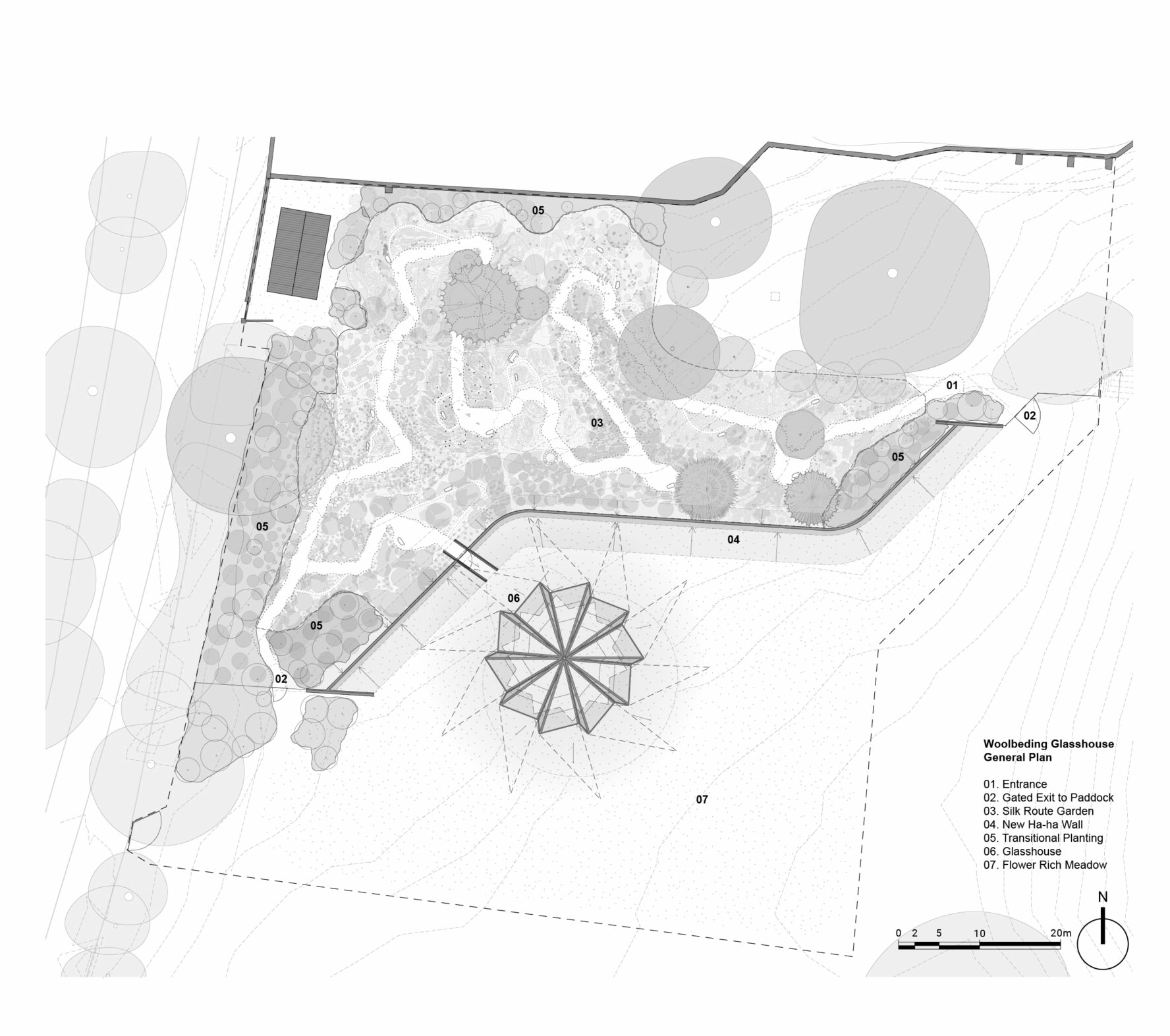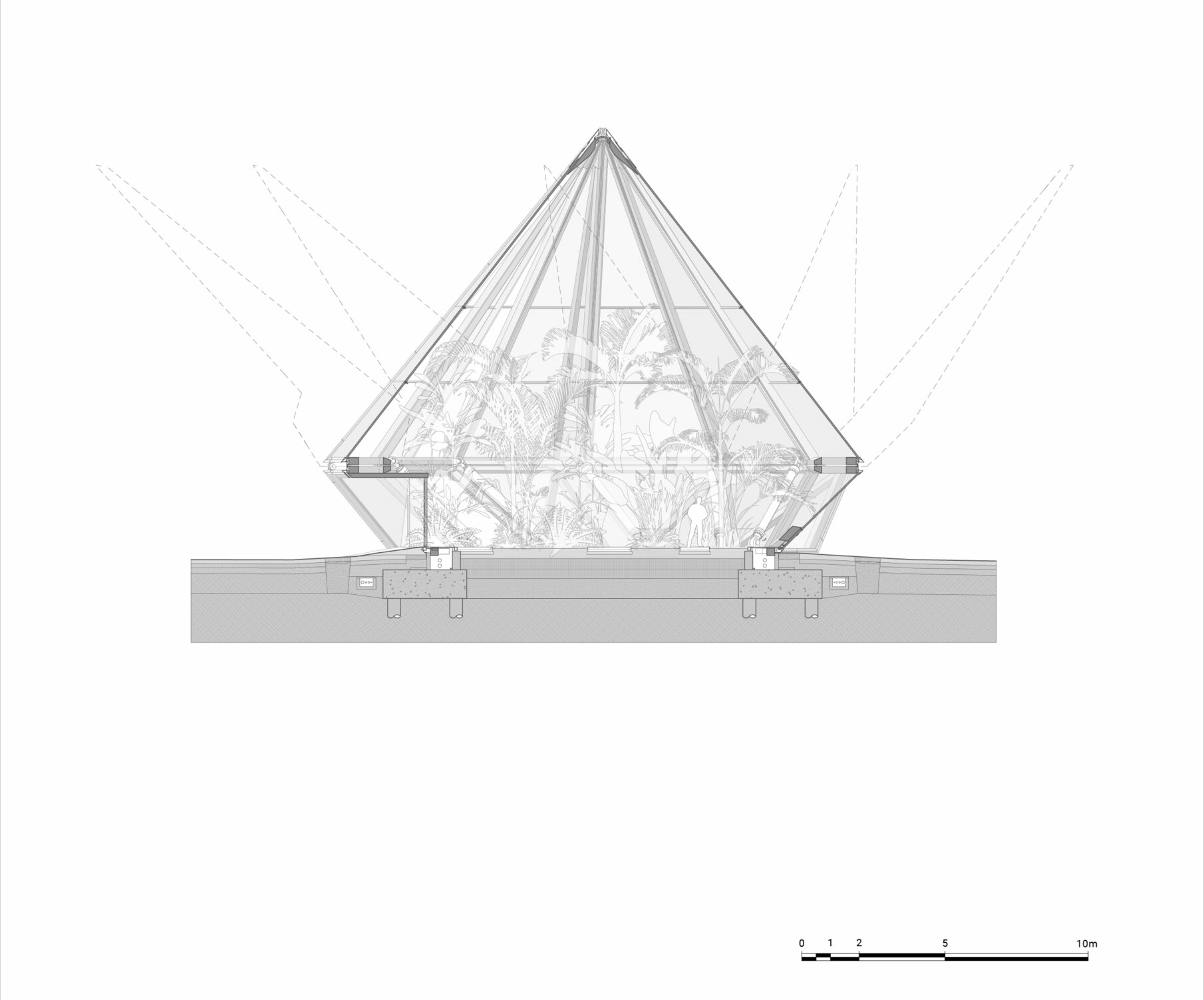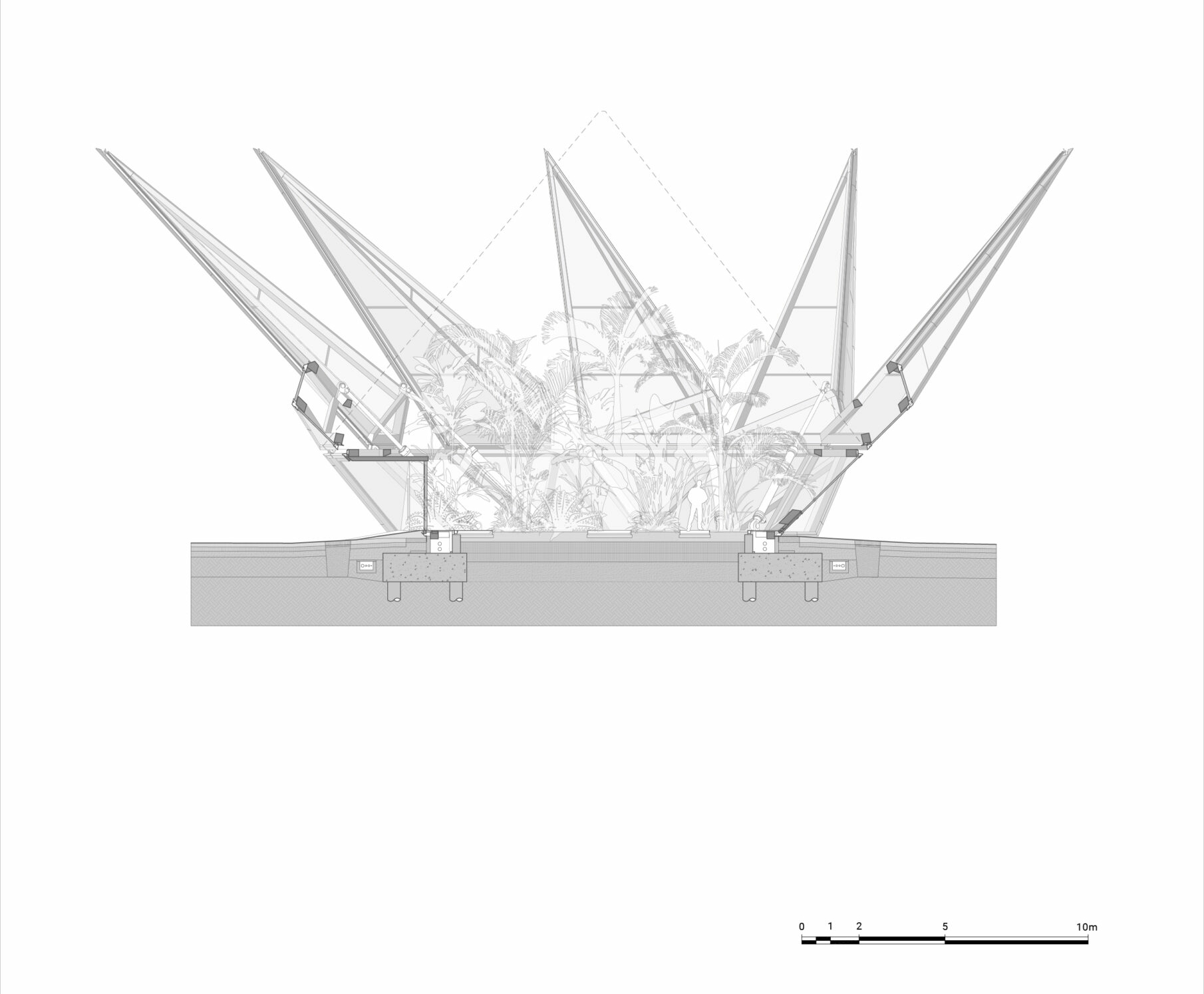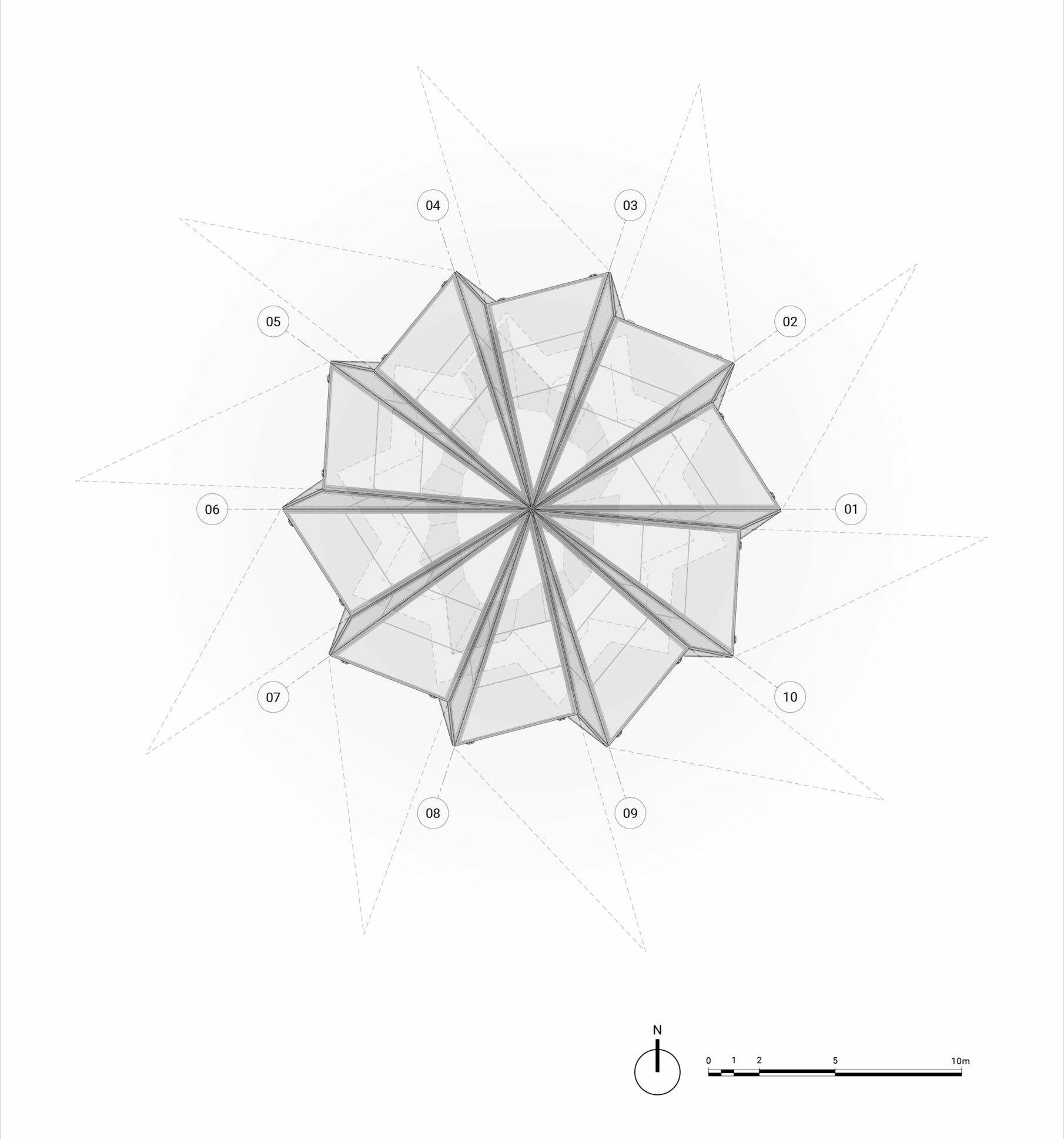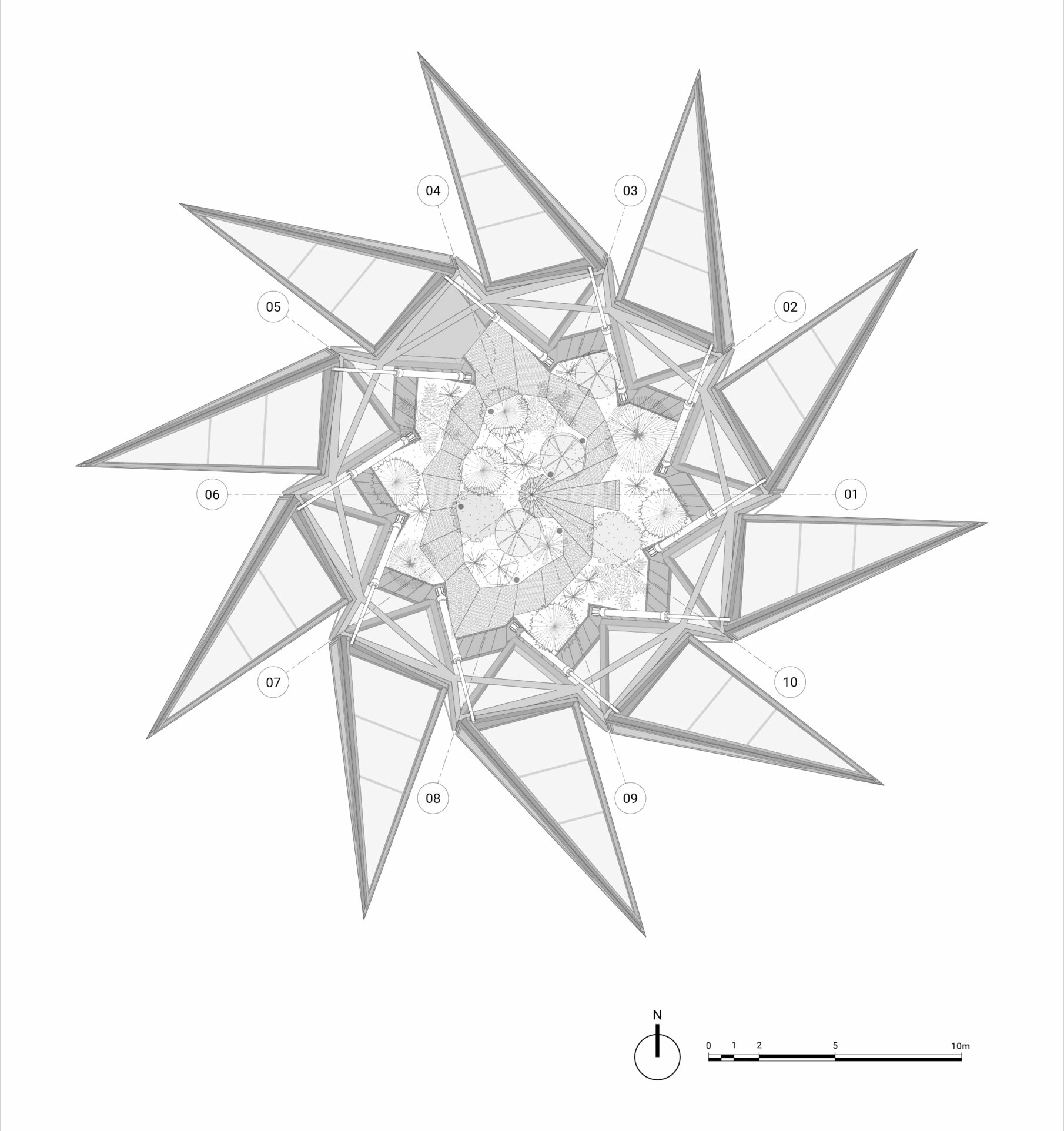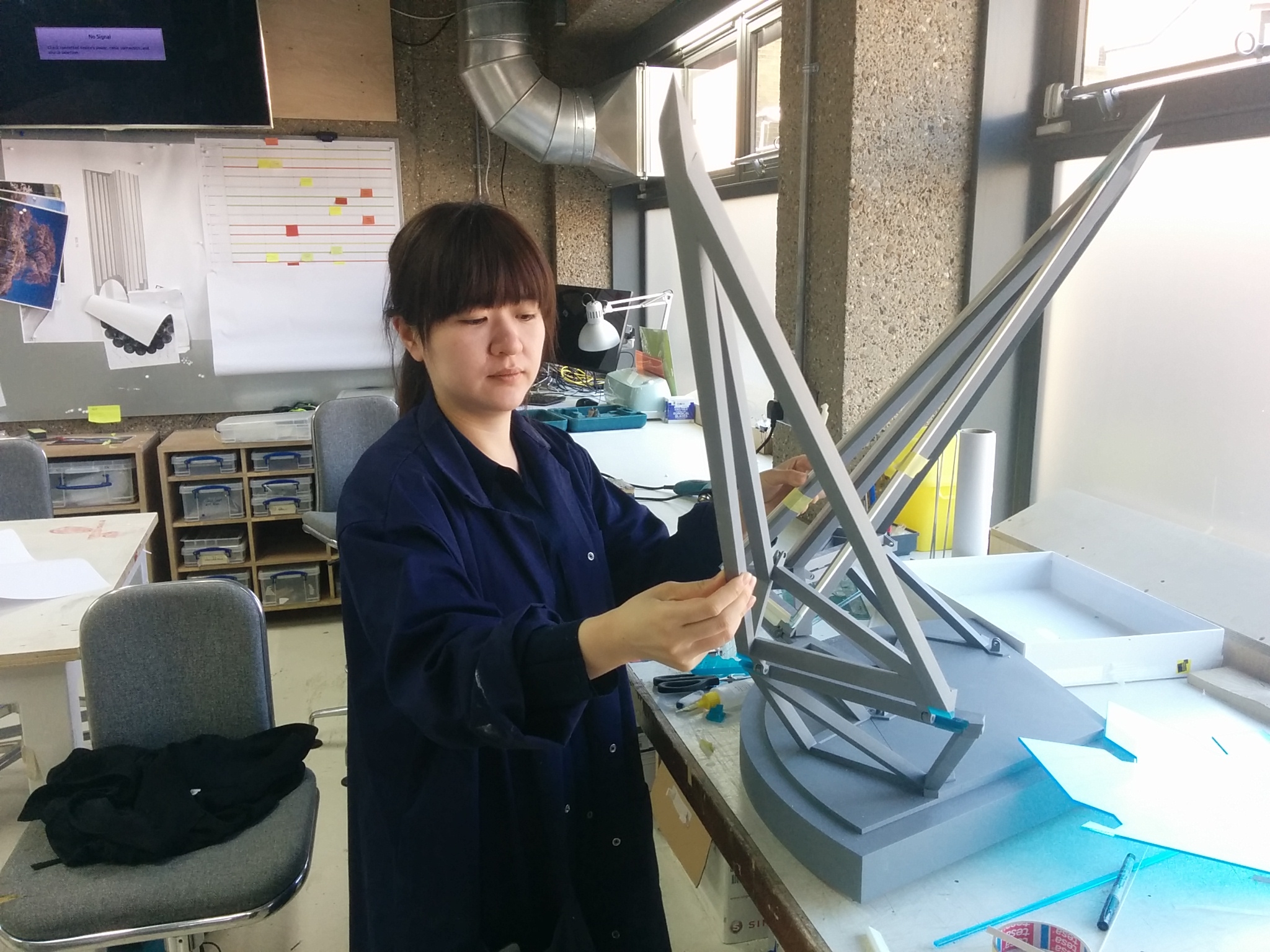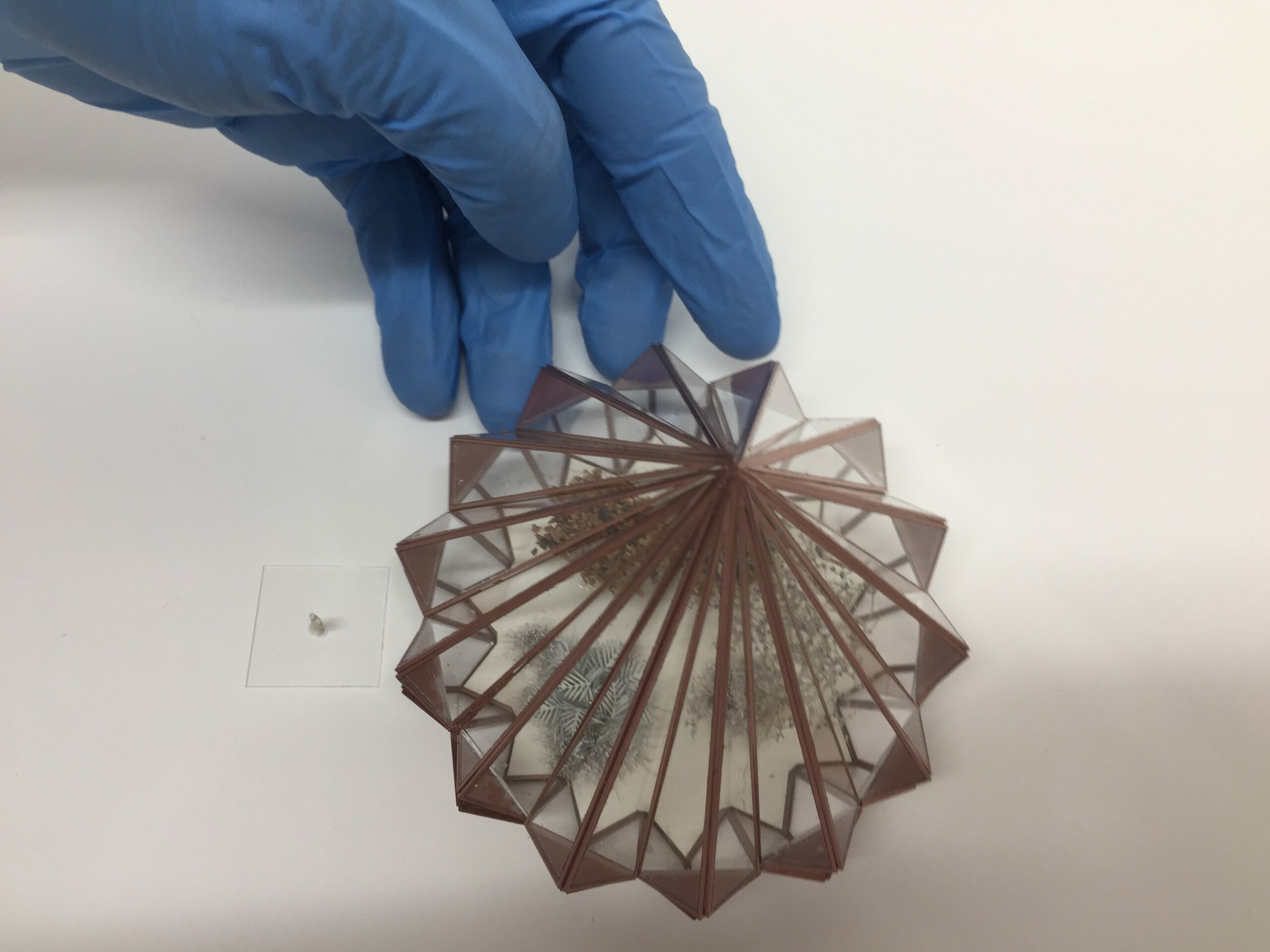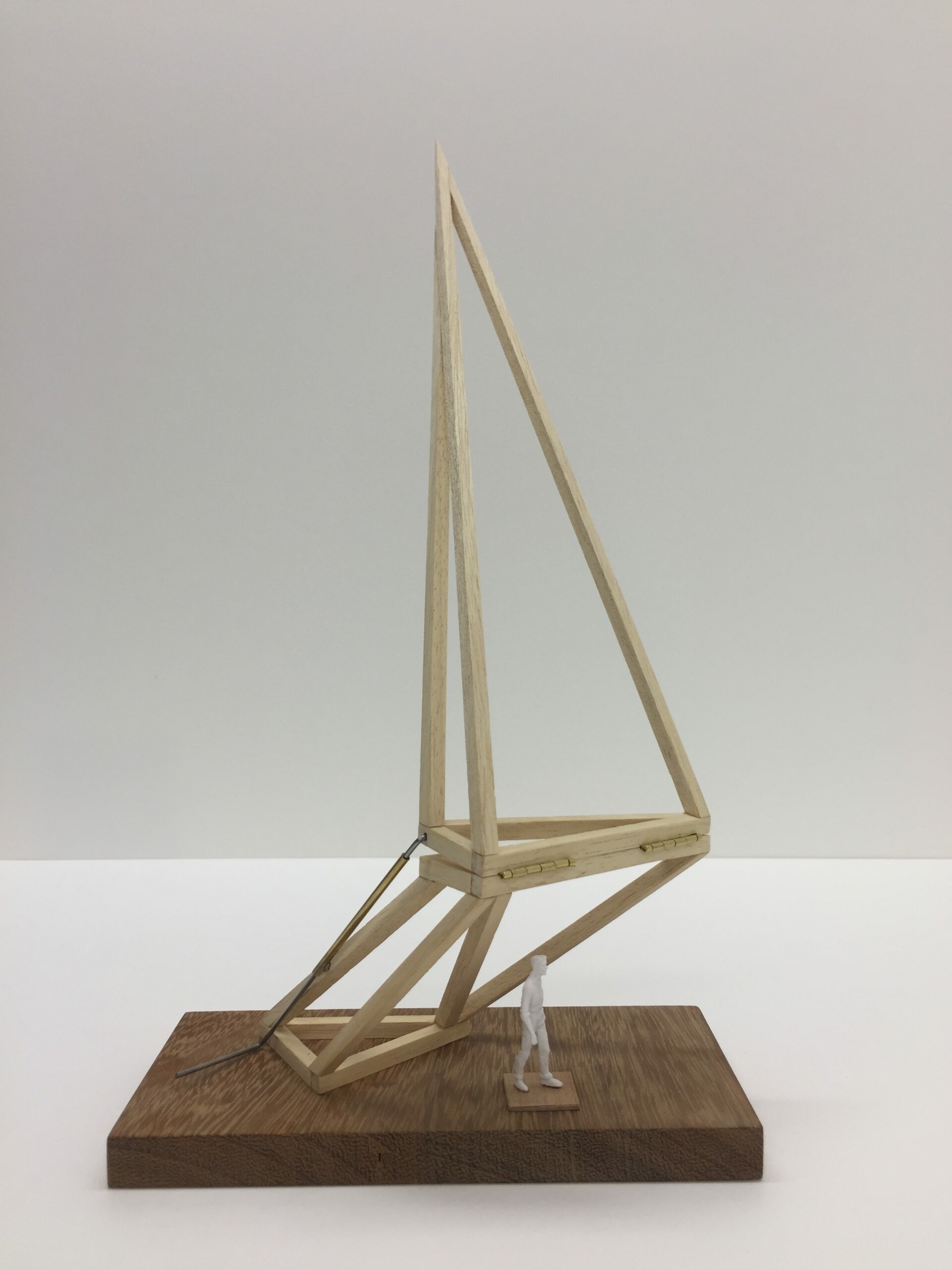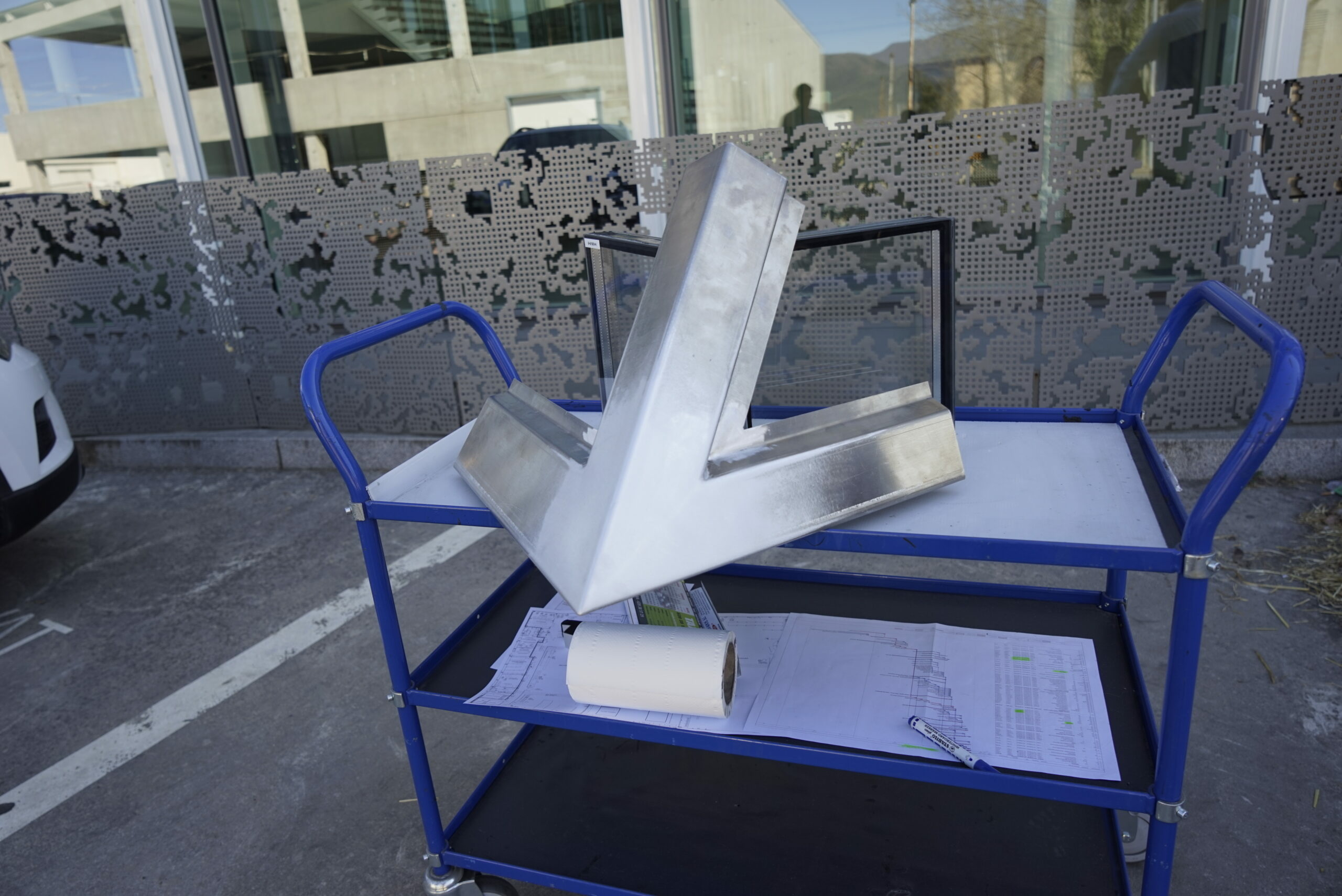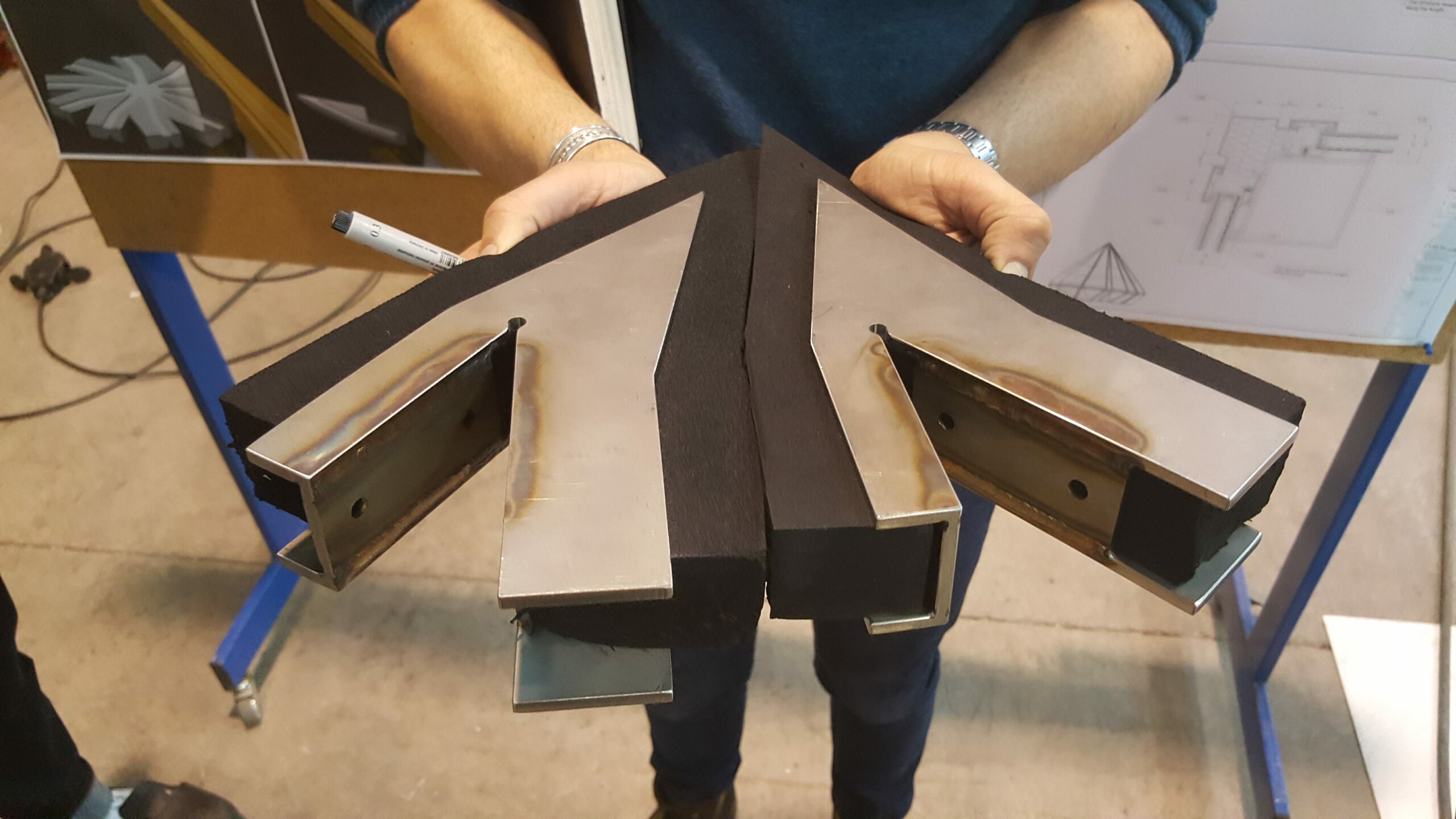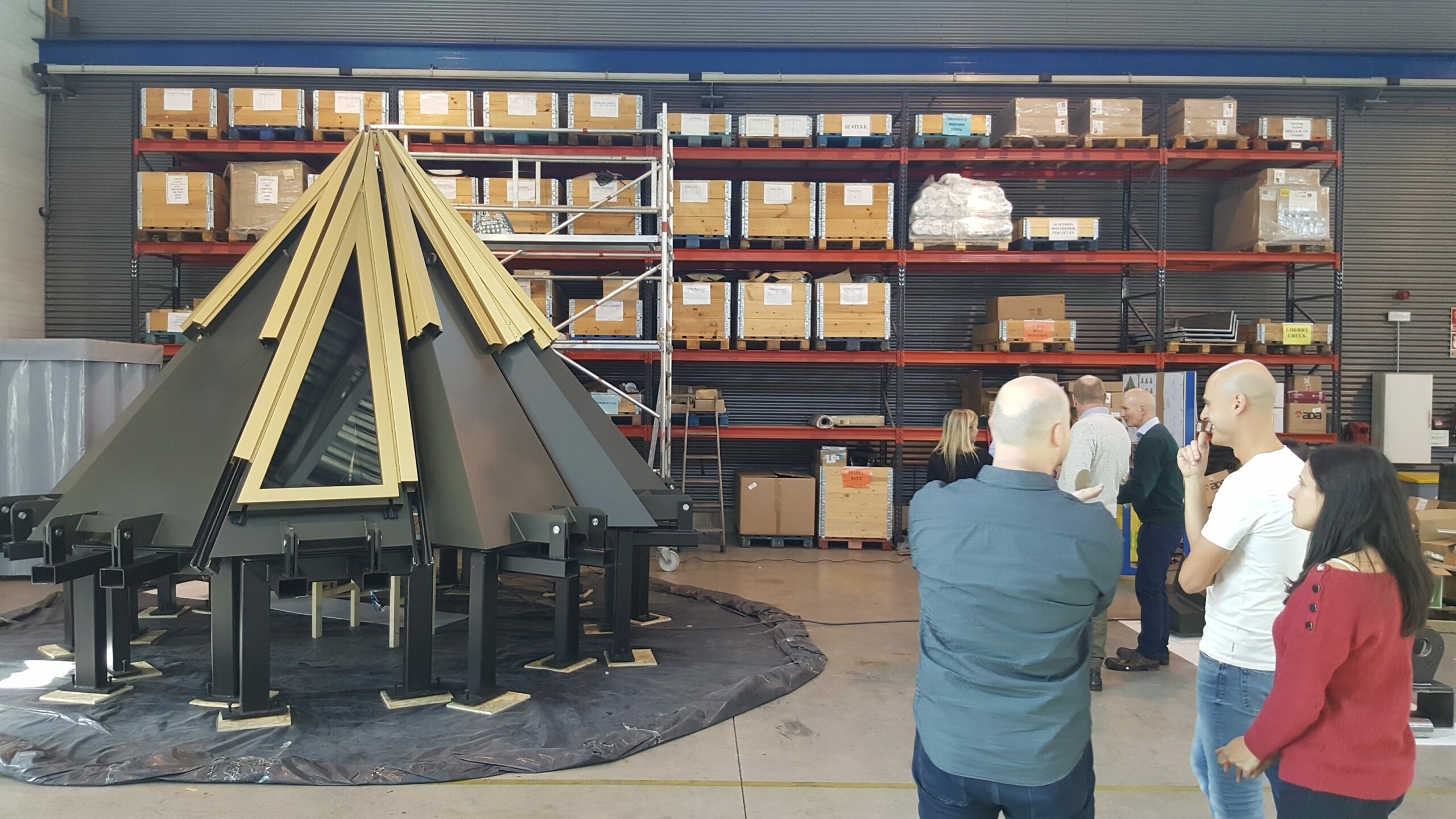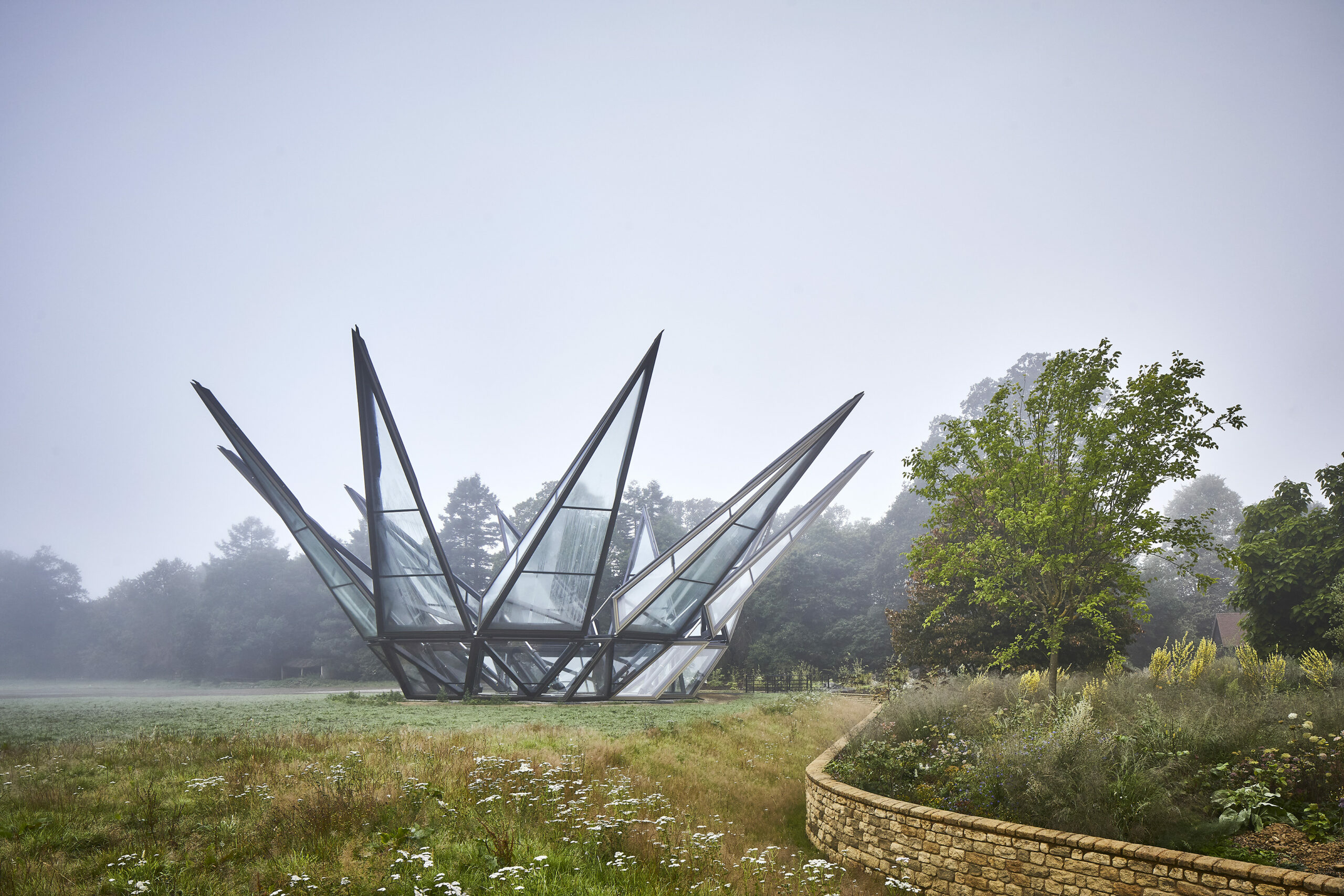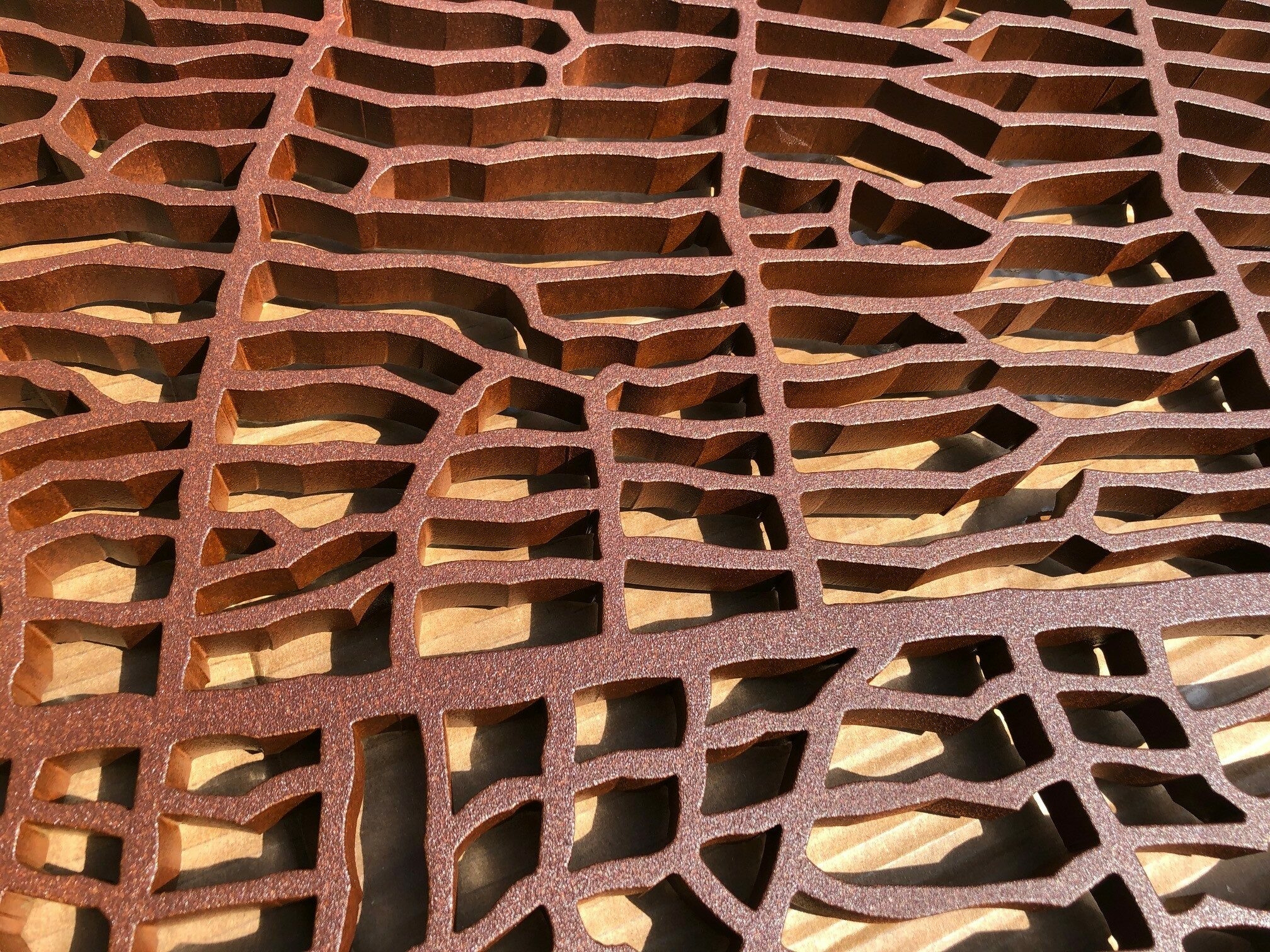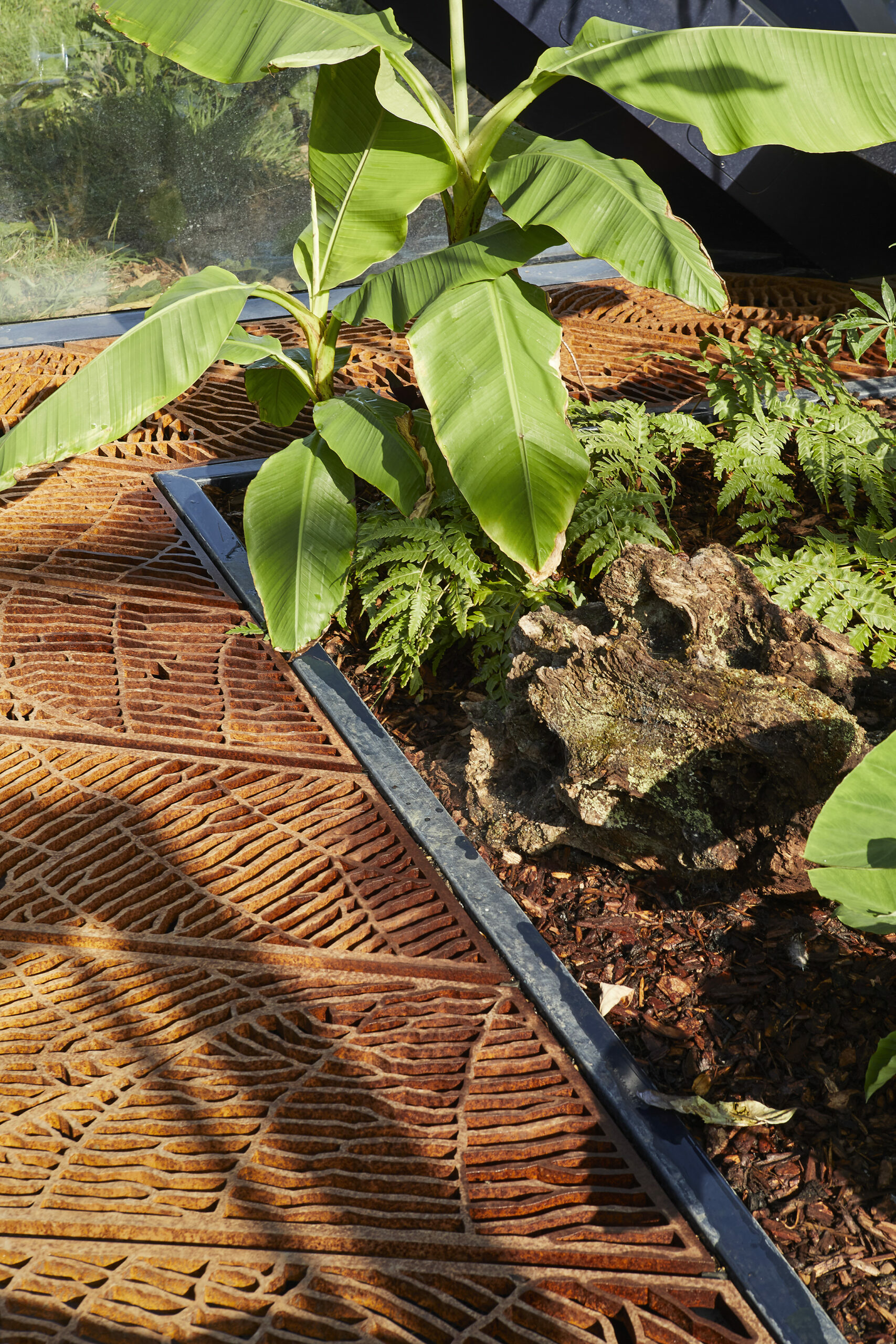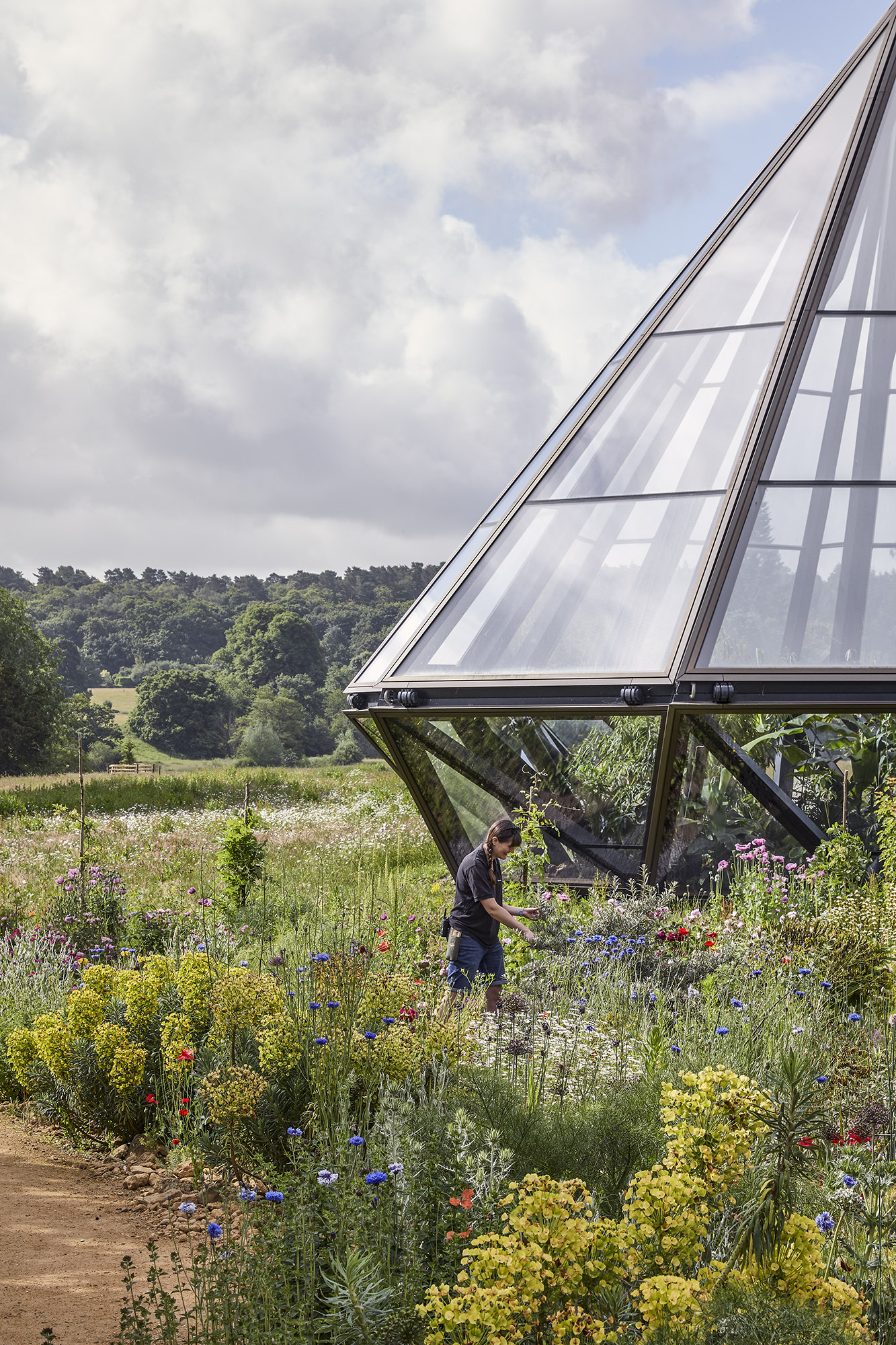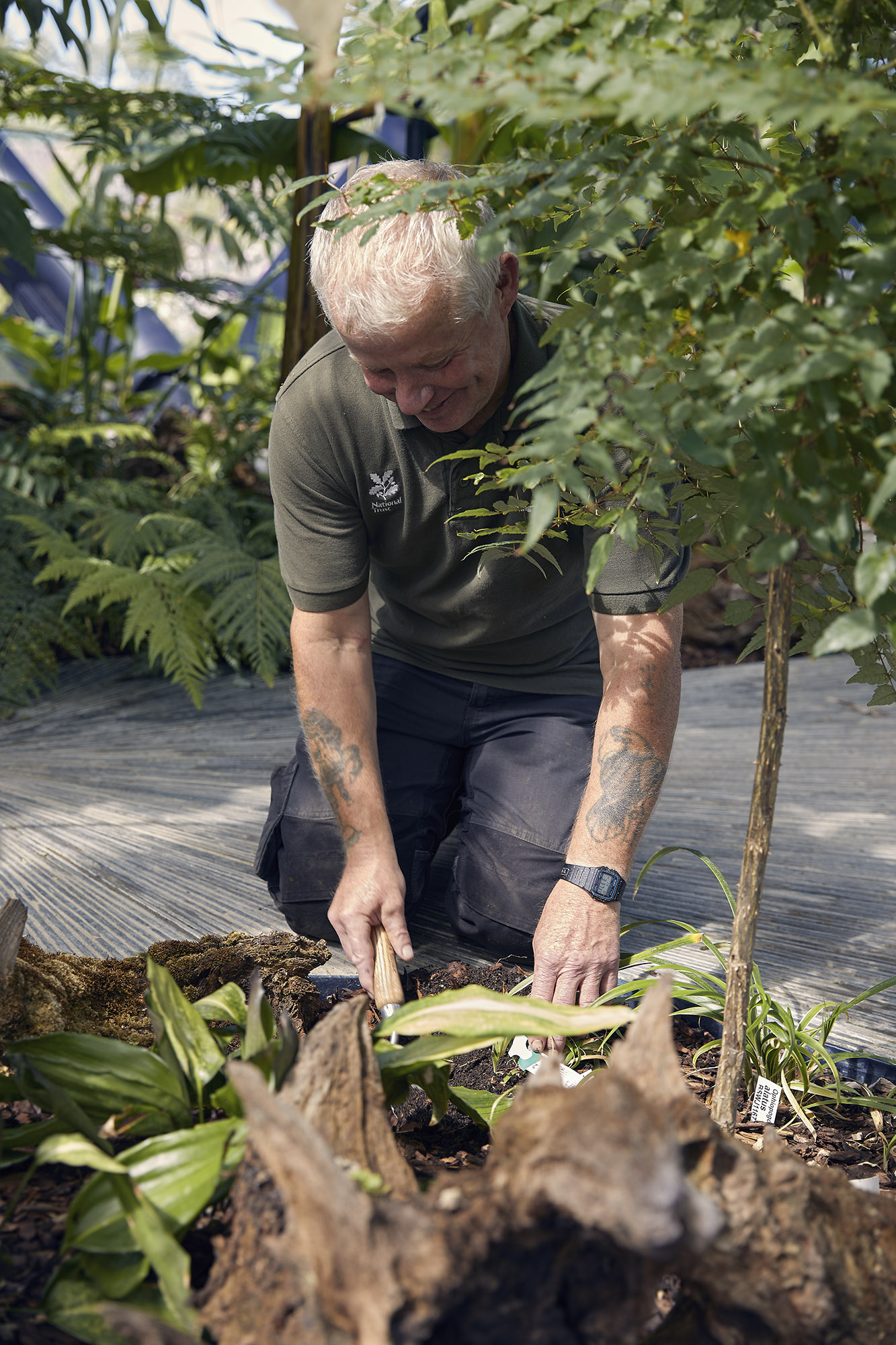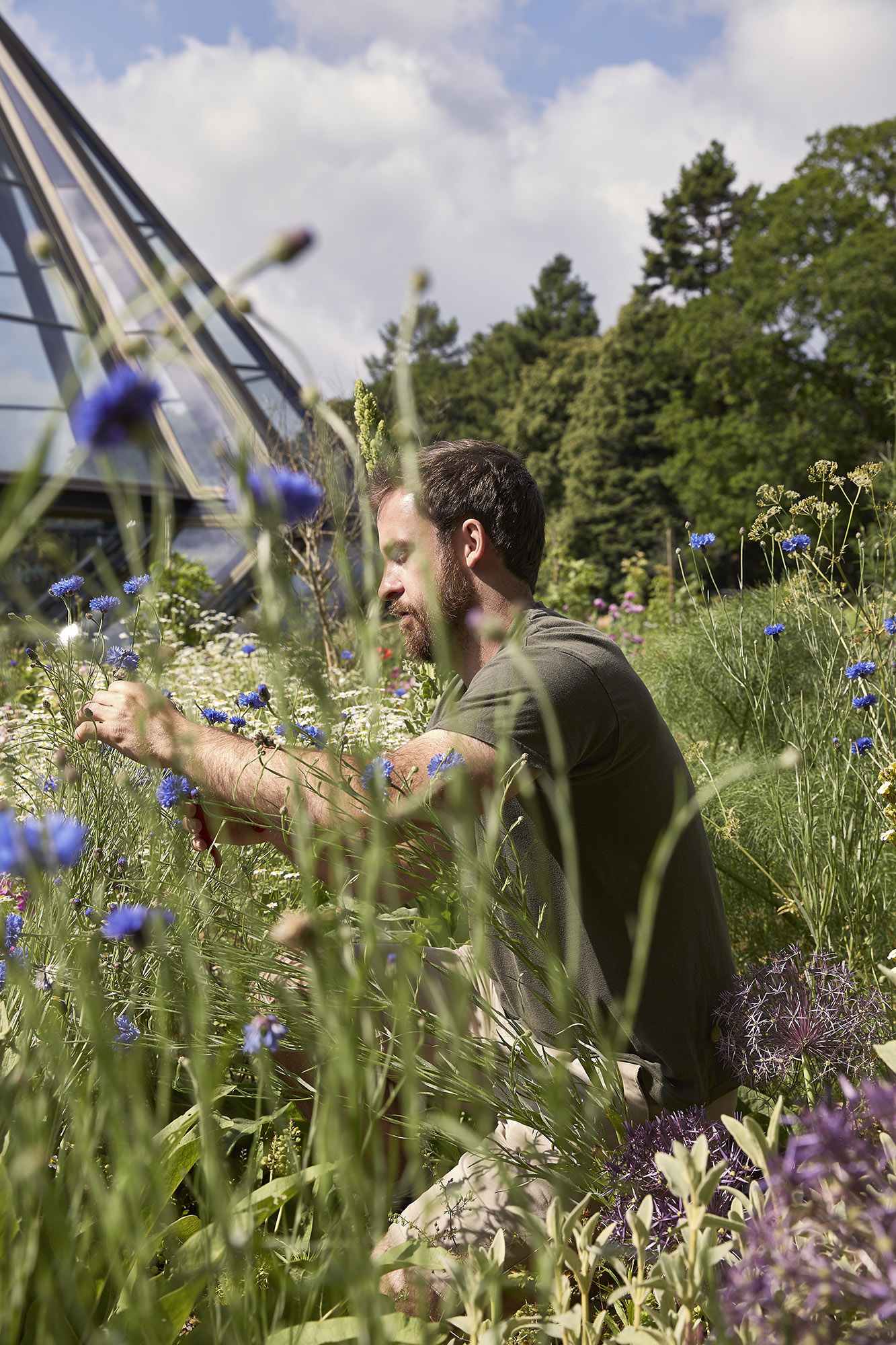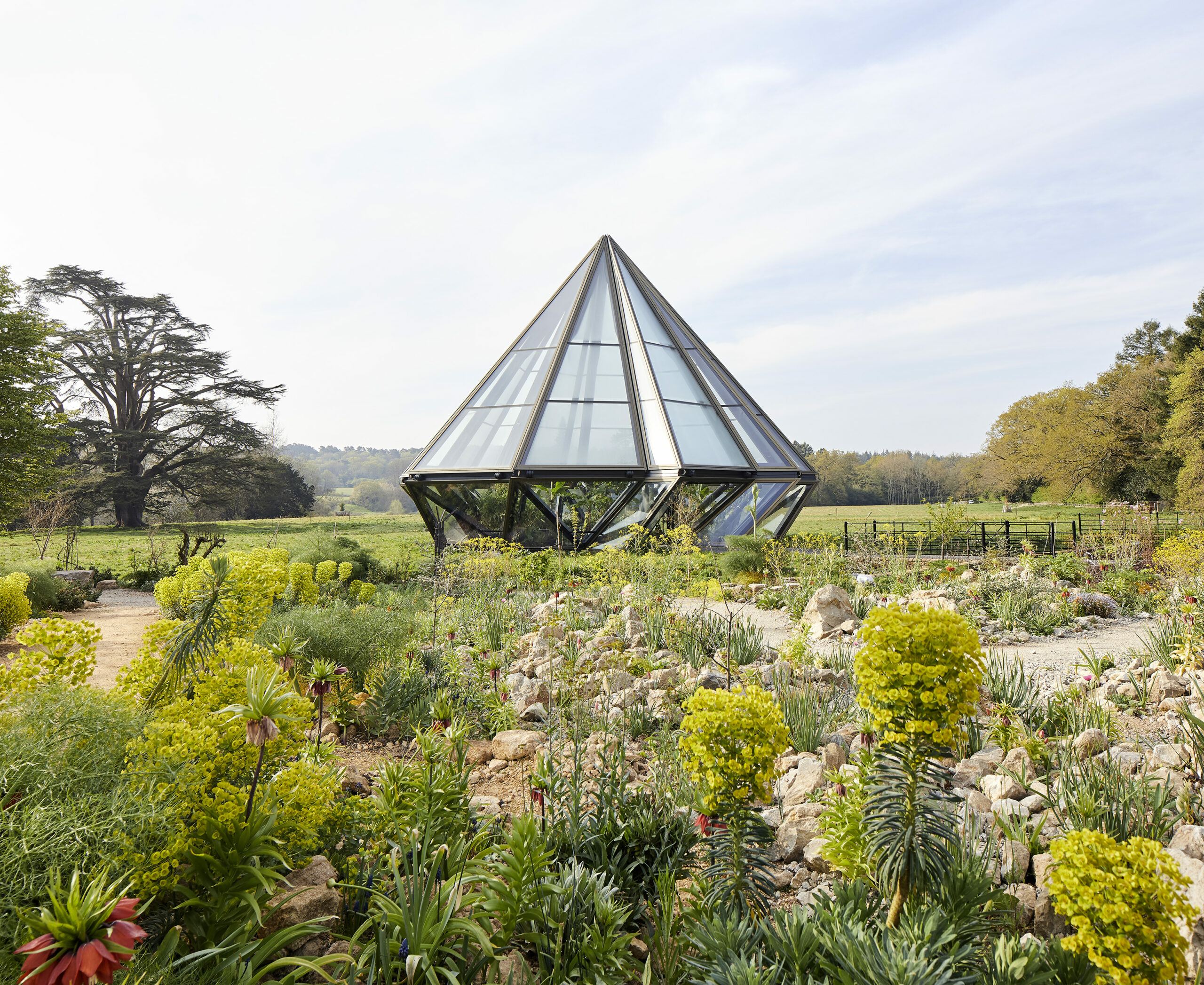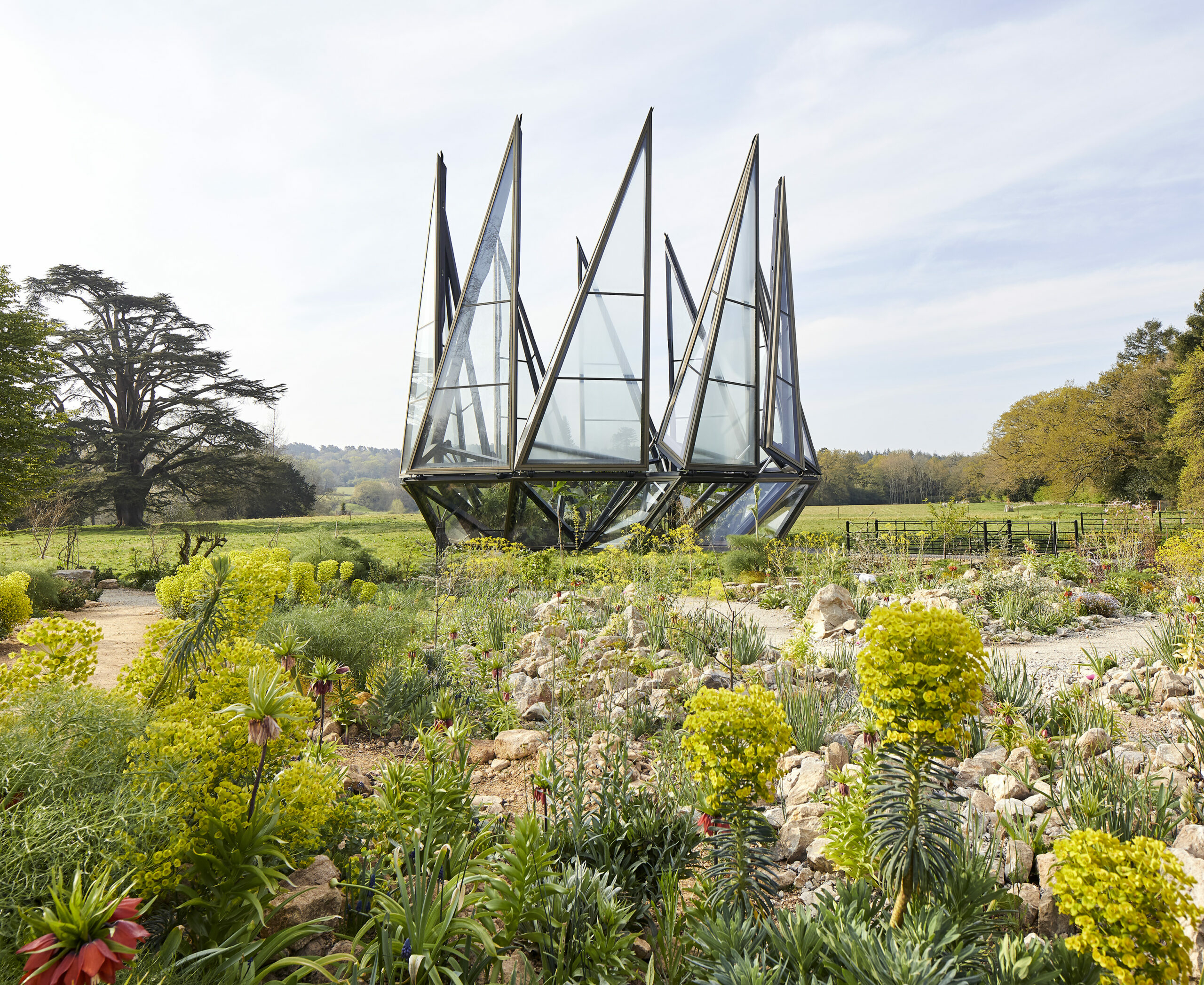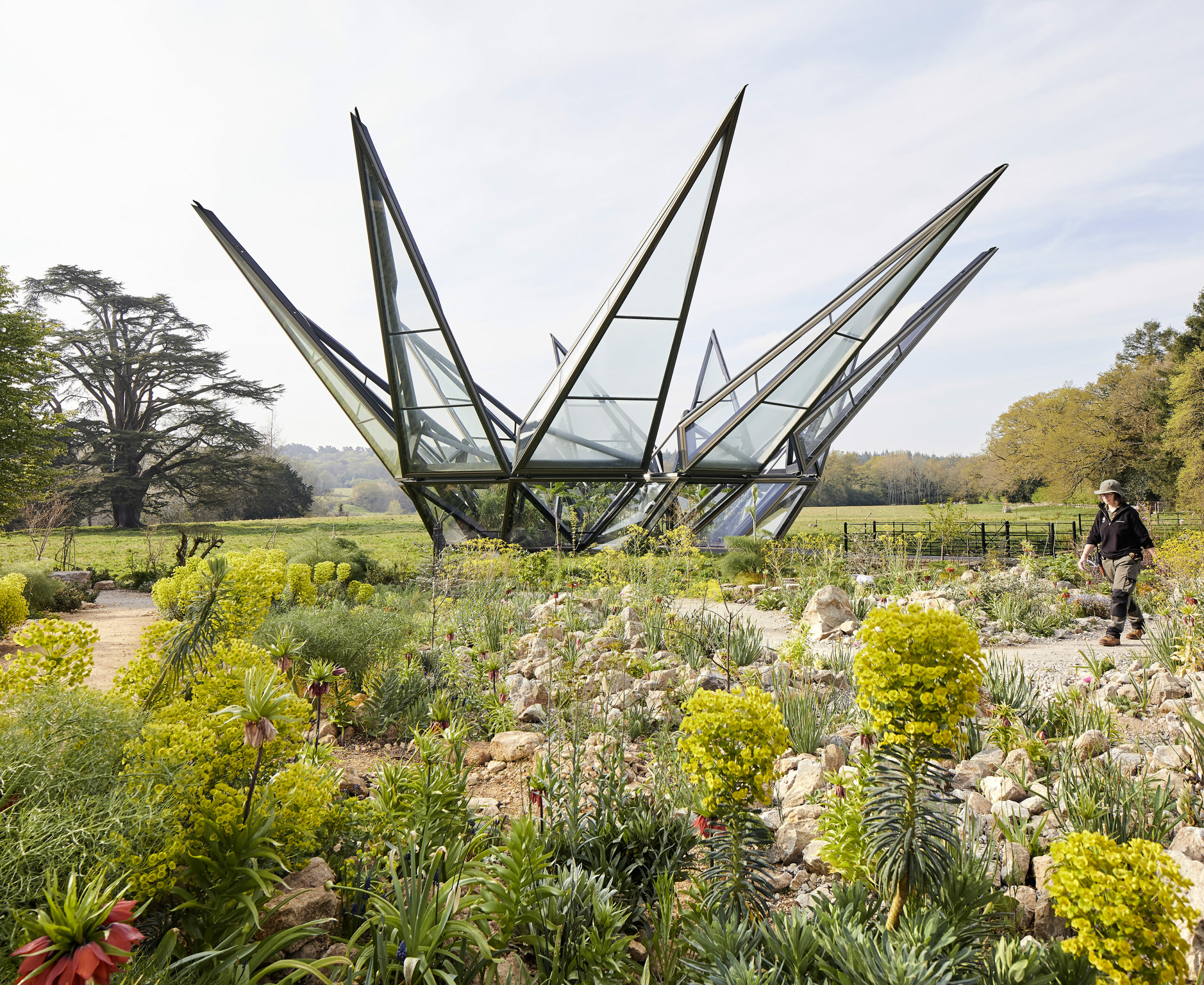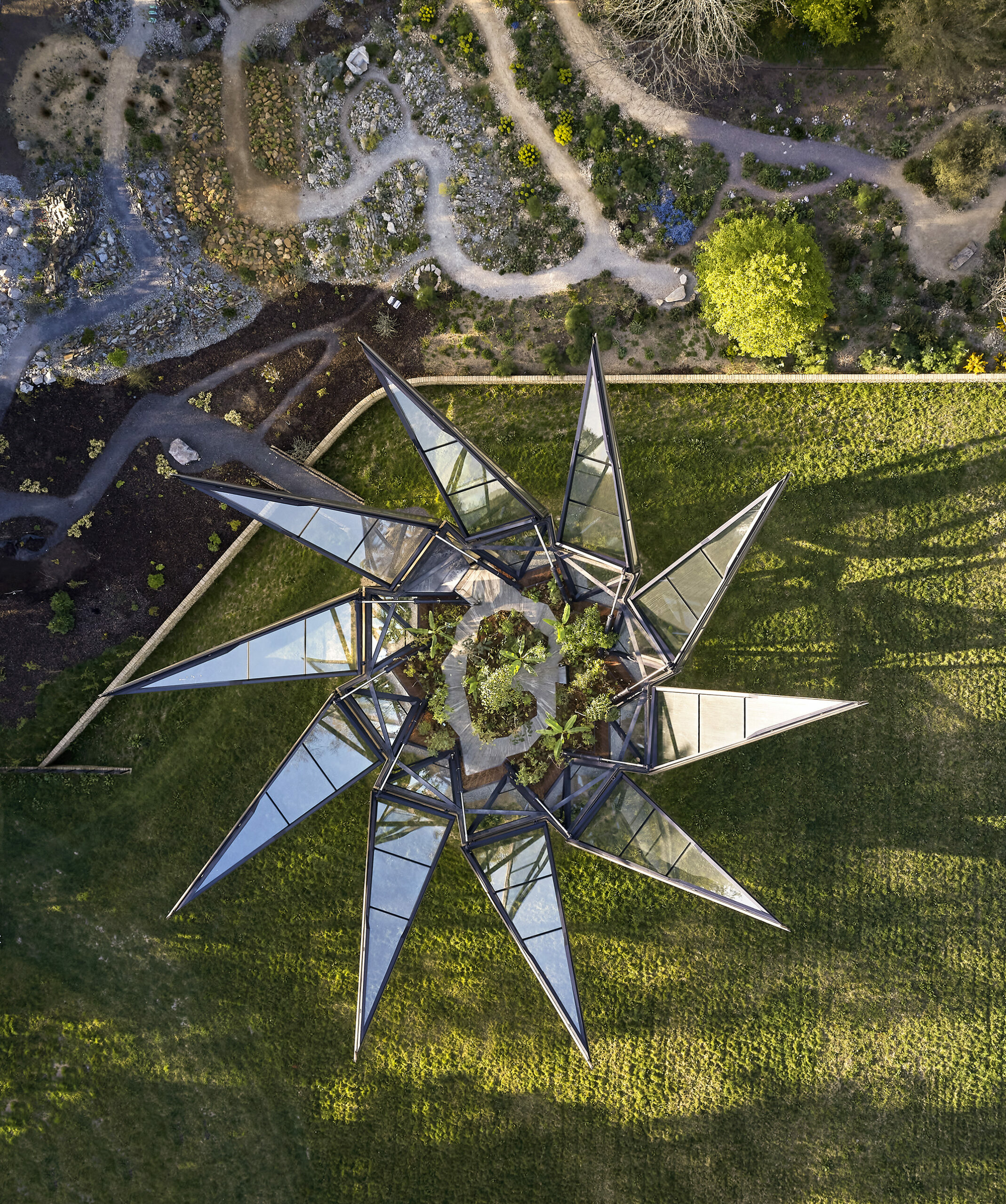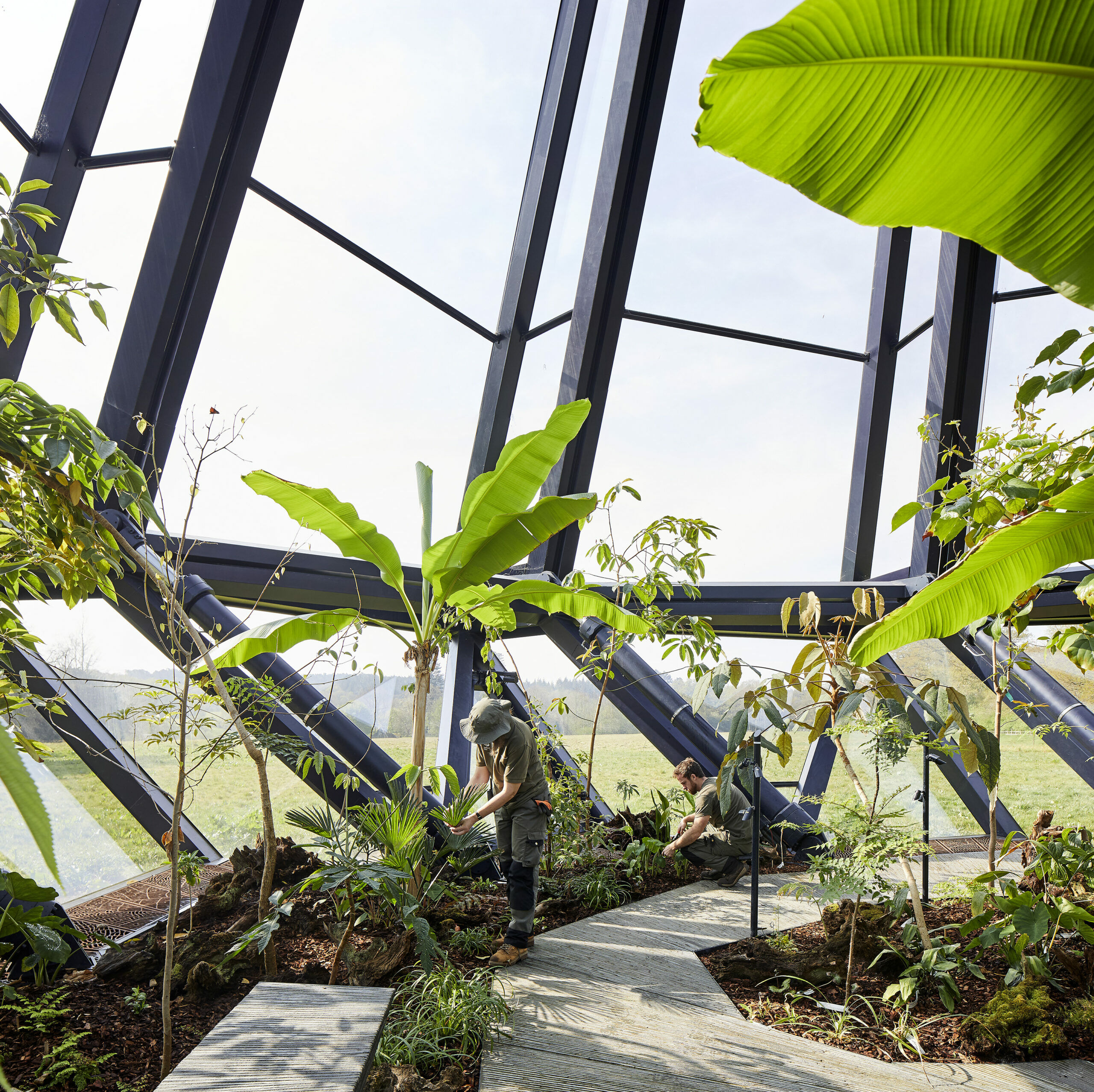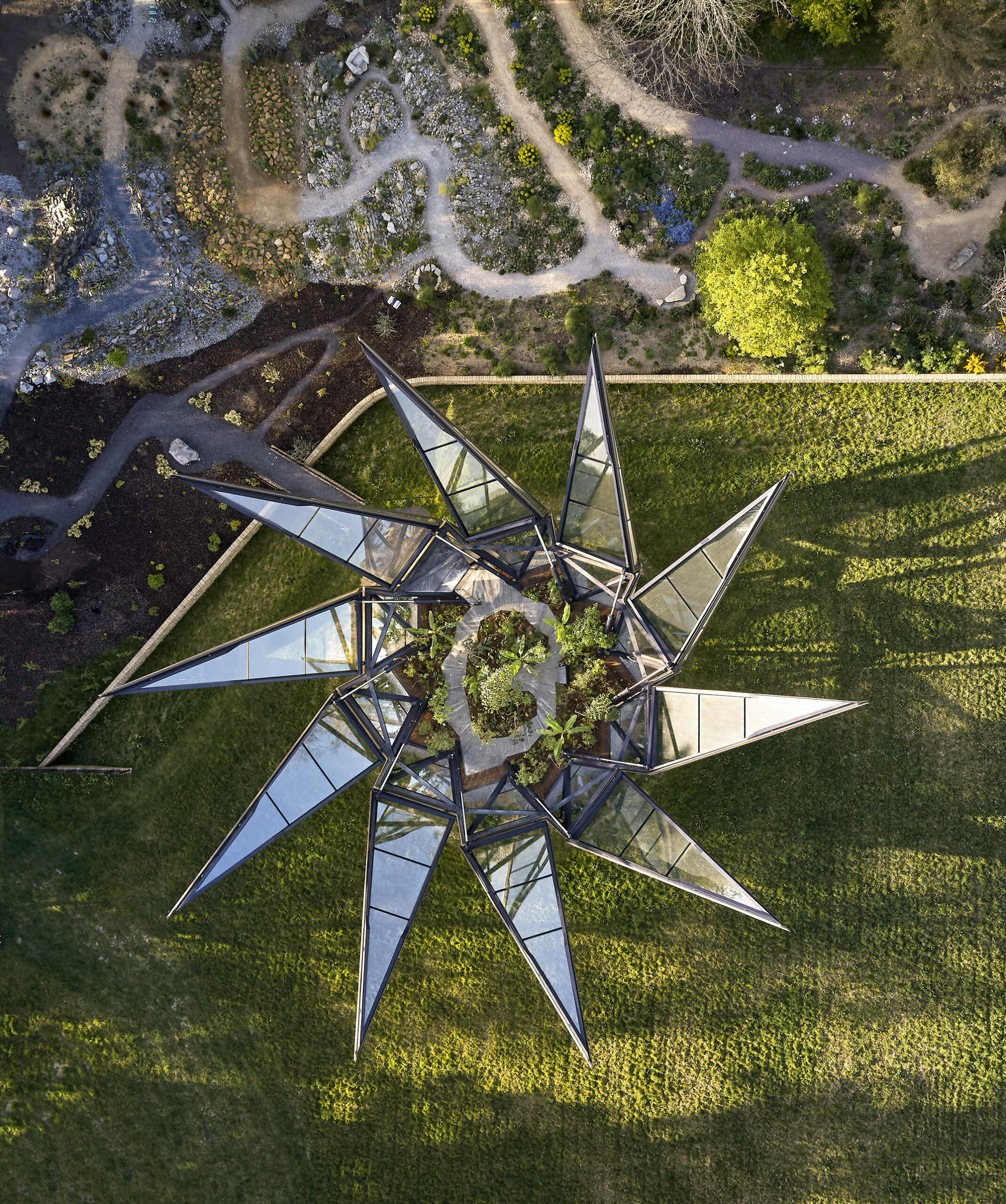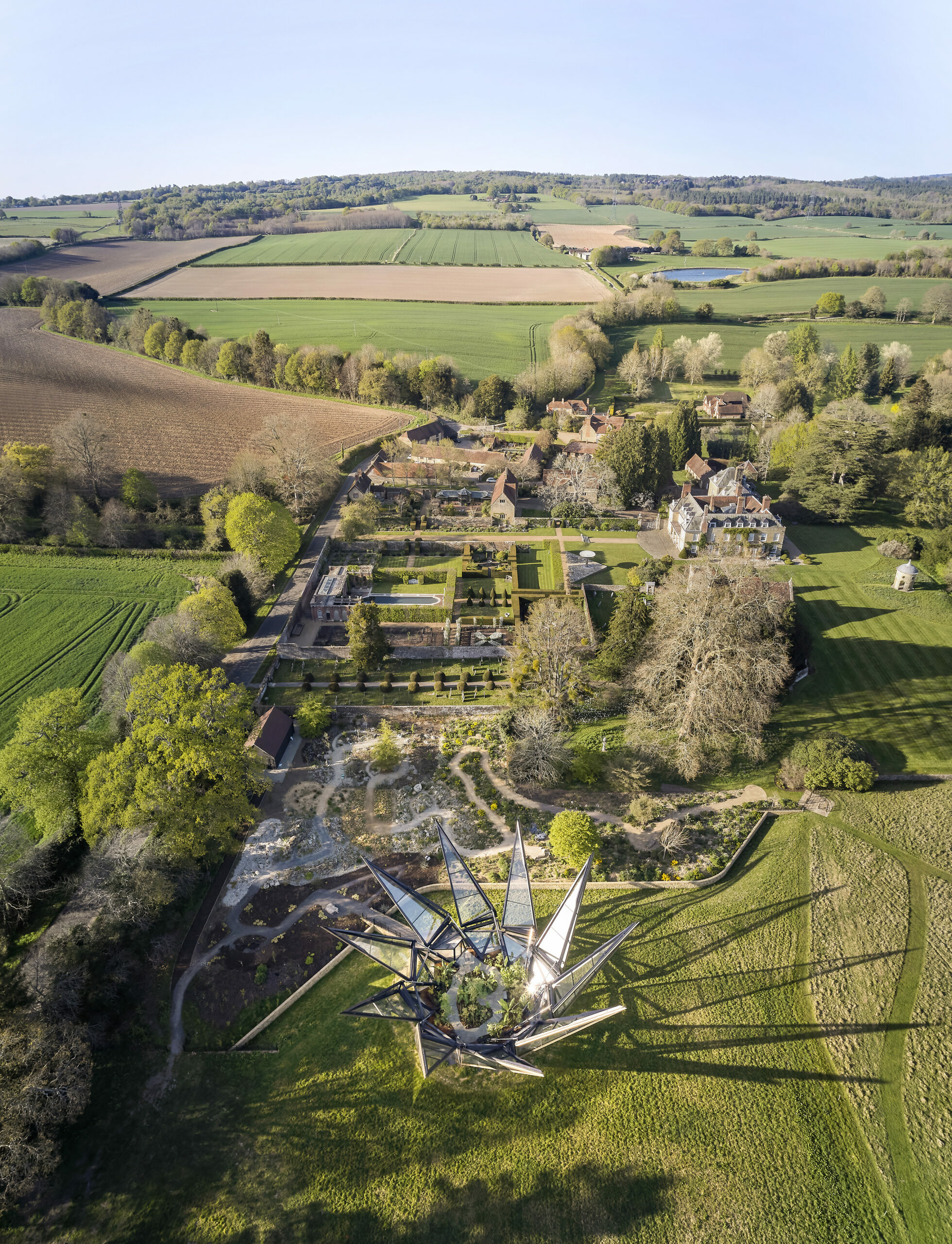The Glasshouse is an unfolding structure on the edge of the National Trust’s Woolbeding Gardens in West Sussex.
Bringing contemporary innovation to an historic setting, the structure transforms from a jewel shape to a 141m2 crown-like space.
The structure slowly unfolds on warm days, providing plants with sunshine and ventilation. Ten steel ‘sepals’ with a glass and aluminium façade open over four minutes using a hydraulic mechanism. In cold weather, the structure remains closed, providing shelter to a collection of subtropical species.
The Glasshouse shelters an impressive, rare specimen of an Aralia Vietnamensis which provides shade for a collection of tender ferns growing alongside umbrella trees, magnolias, and bananas.
Conceived in collaboration with The Woolbeding Charity and the National Trust, the Glasshouse is the focal point of a garden revealing the ancient Silk Route’s influenced on English gardens.
The structure draws inspiration from the spirit of Victorian ornamental terrariums. It deploys cutting-edge engineering to provide a functional protective structure while at the same time offering a beguiling, decorative element to the new Silk Route Garden.
The Silk Route Garden surrounding the Glasshouse invites visitors on a journey through a landscape influenced by the ancient trading route between Asia and Europe where commodities such as the eponymous silk were exchanged and along which many plants species were brought back to Britain for the first time, such as rosemary, lavender, and fennel.
A winding path allows visitors to move through over 300 species and twelve distinct regions of the Silk Road. From Mediterranean evergreens where visitors can enjoy a rare variety of Mullein (Verbascum sp.) grown from a seed brought here by a friend of Woolbeding Gardens, through to the richly scented Gallica roses, now popular in England but originally introduced to Europe by traders from Persia.
The Glasshouse is an unfolding structure on the edge of the National Trust’s Woolbeding Gardens in West Sussex.
Bringing contemporary innovation to an historic setting, the structure transforms from a jewel shape to a 141m2 crown-like space.
The structure slowly unfolds on warm days, providing plants with sunshine and ventilation. Ten steel ‘sepals’ with a glass and aluminium façade open over four minutes using a hydraulic mechanism. In cold weather, the structure remains closed, providing shelter to a collection of subtropical species.
The Glasshouse shelters an impressive, rare specimen of an Aralia Vietnamensis which provides shade for a collection of tender ferns growing alongside umbrella trees, magnolias, and bananas.
Conceived in collaboration with The Woolbeding Charity and the National Trust, the Glasshouse is the focal point of a garden revealing the ancient Silk Route’s influenced on English gardens.
The structure draws inspiration from the spirit of Victorian ornamental terrariums. It deploys cutting-edge engineering to provide a functional protective structure while at the same time offering a beguiling, decorative element to the new Silk Route Garden.
The Silk Route Garden surrounding the Glasshouse invites visitors on a journey through a landscape influenced by the ancient trading route between Asia and Europe where commodities such as the eponymous silk were exchanged and along which many plants species were brought back to Britain for the first time, such as rosemary, lavender, and fennel.
A winding path allows visitors to move through over 300 species and twelve distinct regions of the Silk Road. From Mediterranean evergreens where visitors can enjoy a rare variety of Mullein (Verbascum sp.) grown from a seed brought here by a friend of Woolbeding Gardens, through to the richly scented Gallica roses, now popular in England but originally introduced to Europe by traders from Persia.
